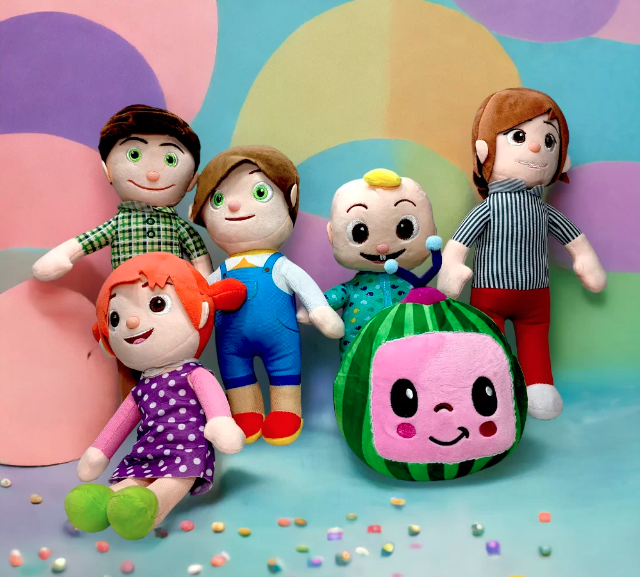Our extensive guide recommendations for baby toys of every age ensure a developing and enriching play experience.
It’s important to recognize and appreciate the different stages of a baby’s development, from the early days of sensory exploration to the later stages of imaginative play. By understanding the significance of each phase, we can better support a child’s overall growth and evolution. It sounds like this guide is a great resource for parents and caregivers who are looking for information on brain evolution toys. By understanding the different enlightening phases in a child’s life, we can choose playthings that will help promote their overall growth and evolution. I’m excited to learn more about the features and benefits of these plaything, and how they can be tailored to different age groups. Let’s dive in!
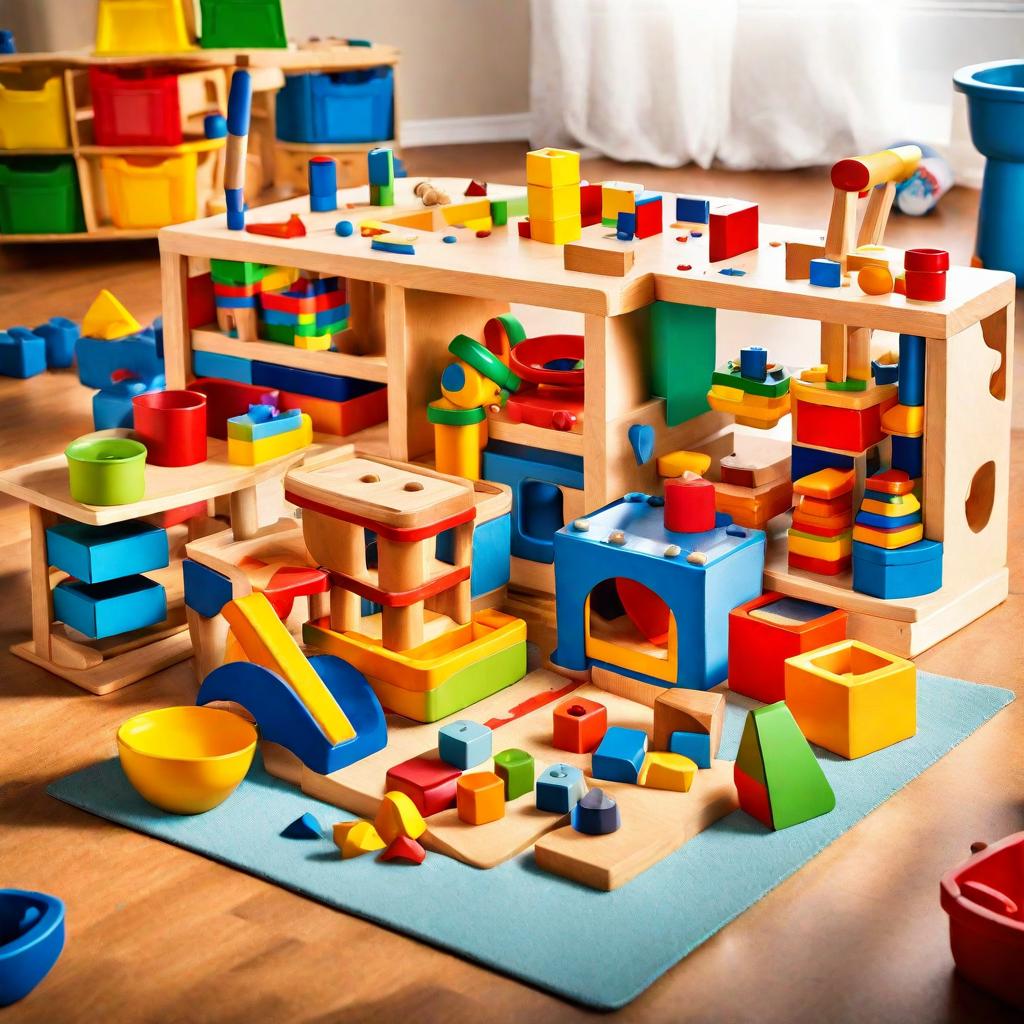

The Importance of Development Toys:
Childhood is a crucial stage of growth and learning. a plaything that children interact with plays an essential role in shaping their enlightening trajectory. Enlightening plaything has a significant impact on a child’s cognitive, emotional, social, and physical advancement. Hence, it is essential to understand the importance of these playthings to provide a nurturing environment for a child’s holistic development.
- Cognitive Stimulation: enlightening playthings are specifically designed to engage a child’s mind, fostering cognitive skills such as problem-solving, critical thinking, and spatial awareness. Simple puzzles and complex building sets are great examples of such playthings that stimulate curiosity and creativity, laying the foundation for future academic success.
- Fine and Gross Motor Skills Improving: Many enlightening playthings are crafted to enhance a child’s motor skills, both fine and gross. For example, building blocks that improve hand-eye coordination and ride-on playthings that promote balance and coordination contribute to the physical improvement necessary for various tasks throughout a child’s life.
- Social and Emotional Growth: Toys are not just entertainment; they also play an essential role in a child’s social and emotional development. Board games, for instance, help children learn valuable social skills such as sharing, taking turns, and teamwork. Moreover, dolls and action figures allow children to express and understand emotions, which helps them develop empathy and interpersonal skills.
- Language improving: Interactive playthings that promote communication, such as storybooks, language games, and musical instruments, are essential for developing a child’s language skills, expanding their vocabulary, and enhancing their linguistic capabilities.
- Sensory Exploration: In a child’s early stages, sensory experiences are crucial for overall development. plaything with different colors, textures, and sounds can stimulate a child’s senses, developing neural pathways and enhancing sensory integration.
- Imagination and Creativity: enlightening toys often offer an unstructured play environment that stimulates imagination and creativity. Building blocks, art supplies, and pretend play objects enable children to explore their creativity, inspiring them to think beyond the obvious and cultivate a rich inner world.
Birth to 6 Months
During the first six months of an infant’s life, play mainly revolves around sensory exploration, visual stimulation, and the improvement of fundamental motor skills. Here are some suggested playthings that are appropriate for infants from birth to six months:
- Soft Rattles: Soft and lightweight rattles with gentle sounds can grab an infant’s attention and help develop their auditory senses. Look for ones with contrasting colors to stimulate visual interest.
- High-Contrast: As their vision is still developing, infants are attracted to high-contrast patterns and bold colors. Consider providing them with playthings that have black-and-white patterns or high-contrast designs to enhance their visual senses.
- Soft Plush: Cuddly stuffed animals with various textures offer tactile stimulation. Opt for ones easy to grasp, promoting early grasping reflexes and fine motor skills development.
- Soft Fabric Books: Cloth or fabric books with simple patterns and large, colorful images are ideal for introducing babies to the concept of books and encouraging visual exploration.
- Mirrors: Infants often show interest in their reflection. Baby-safe mirrors can provide visual stimulation and promote self-awareness.
- High-Contrast Mobiles: Hang a high-contrast mobile above the crib to engage your baby’s visual attention. This not only provides visual stimulation but also encourages tracking movements.
- Tummy Time Mats: Engaging in tummy time is crucial for developing neck and upper body strength. Tummy time mats with plaything, mirrors, and textures can make it more enjoyable for babies.
- Soft Teething: If your baby starts teething at around three to four months, consider using soft teething plaything. These playthings can provide relief for sore gums while also encouraging mouthing, which is a natural exploration behavior.
- Gentle Music: Infants can be calmed by soft and soothing music toy playthings or lullabies that play gentle melodies or nature sounds.
- Soft Sensory Balls: Soft, textured sensory balls are great for exploring touch and improving grip strength.
When choosing toys for infants, safety should always be the top priority. Make sure that the playthings you select are free from small parts that could cause choking and are made from non-toxic materials that are safe for babies. In addition, it’s important to regularly inspect playthings for any signs of wear or damage. During this stage, interactive play and positive interaction with caregivers are critical, so don’t underestimate the value of bonding through simple, engaging activities.
6 to 12 Months
As babies grow from six to twelve months, they begin to engage in more interactive and exploratory play. This stage of improvement is crucial for the acquisition of motor skills, spatial awareness, and a deeper understanding of cause and effect. To encourage healthy play and improvement, here are some recommended toys for babies aged 6 to 12 months:


- Stacking Cups: Colorful, stackable cups are excellent for improving fine motor skills and promoting hand-eye coordination. They can be stacked, nested, or used for pouring water during bath time.
- Soft Squeeze Balls: Soft and squeezable balls with different textures provide tactile stimulation and are easy for little hands to hold. These balls can encourage reaching, squeezing, and eventually throwing.
- Soft Building Blocks: Soft, lightweight building blocks with different textures and patterns are safe for babies to handle. These blocks promote sensory exploration, stacking, and knocking down activities.
- Push and Pull: Toys that babies can push or pull while learning to stand or walk can be both entertaining and beneficial for motor skill development. Look for sturdy plaything with easy-to-grasp handles.
- Interactive Board Books: Board books with interactive features such as flaps, textures, and mirrors are engaging for this age group. Reading together promotes language improvement and bonding.
- Shape Sorters: Shape sorters with large, easy-to-grasp shapes help develop fine motor skills and spatial awareness. This classic toy introduces the concept of matching shapes.
- Musical Instruments: Simple musical instruments like shakers, tambourines, or small drums can introduce babies to different sounds and rhythms, fostering an early appreciation for music.
- Nesting: Nesting cups or boxes encourage problem-solving and fine motor skills. Babies can stack them, nest them, or even hide small toys inside.
- Soft Plush Dolls or Stuffed Animals: Soft, cuddly dolls or stuffed animals provide comfort and can become companions for your baby. Choose ones with contrasting colors and varying textures.
- Activity Gyms: Activity gyms with hanging playthings and mirrors are excellent for tummy time and overall physical improvement. Some also have detachable playthings for on-the-go play.
- Baby Swings or Bouncers: Safe and age-appropriate baby swings or bouncers provide a soothing and comfortable environment for play, often with attached toys for visual and tactile stimulation.
- Chewable Teething: At this stage, teething may continue, so providing safe, chewable teething plaything can help soothe sore gums.
Remember to supervise playtime and choose playtings that are free from small parts that could pose a choking hazard. Additionally, engage in interactive play with your baby to enhance the bonding experience and support their social and emotional improvement. enhance the bonding experience and support their social and emotional development.
1 to 2 Years
Toddlers between the ages of 1 and 2 years are curious explorers, and they develop rapidly in terms of mobility, language, and social skills. They start to engage in imaginative activities, and their play becomes more purposeful. If you’re looking for some recommended plaything for toddlers of this age, here are a few options to consider:
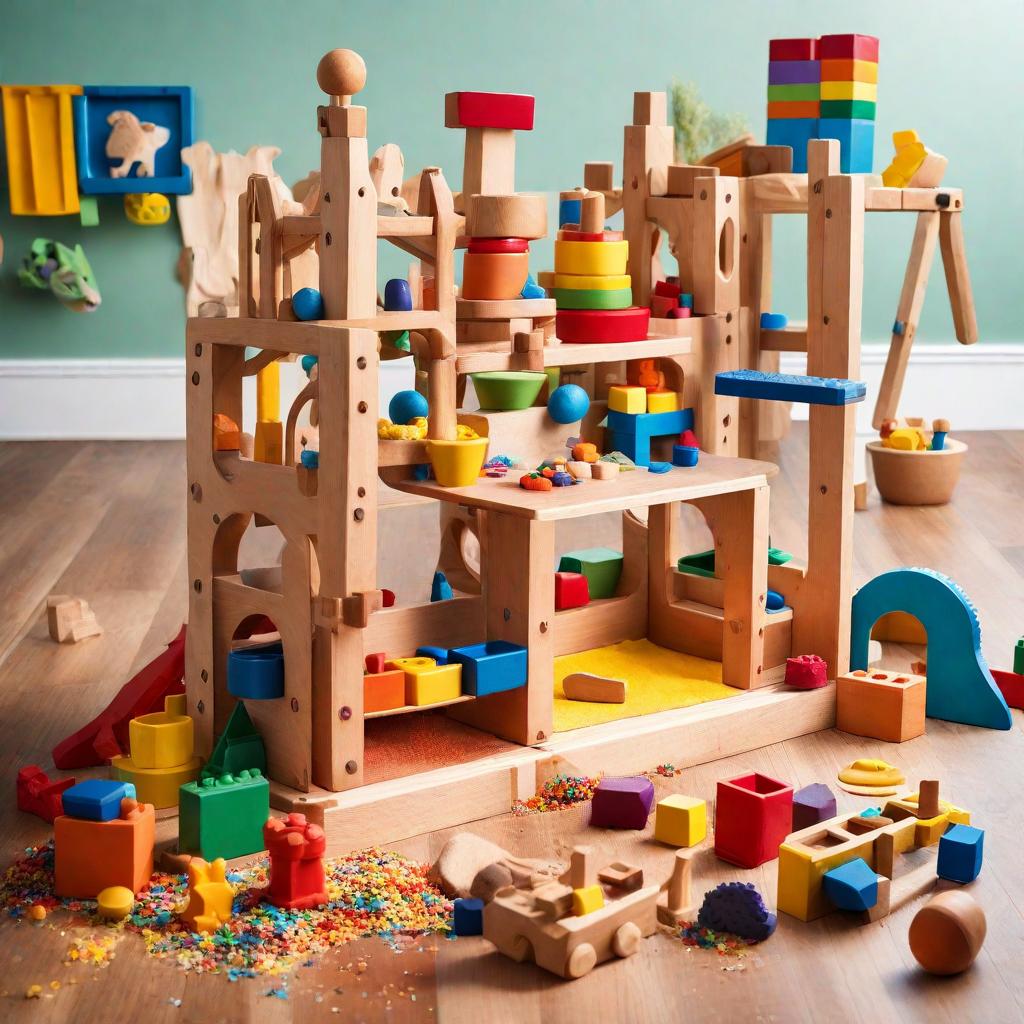

- Push and Pull: Sturdy push toys that toddlers can walk behind or pull along help improve balance and coordination. Look for options with colorful designs and engaging features.
- Shape Sorters and Stackers: Shape sorters and stackers challenge toddlers’ problem-solving and fine motor skills.
- Large Building Blocks: Larger interlocking building blocks are perfect for toddlers to stack, knock down, and build simple structures. This enhances creativity and motor skills.
- Puzzles with Large Pieces: Simple puzzles with large, easy-to-grasp pieces help develop cognitive skills and hand-eye coordination. Choose puzzles with images that interest the child.
- Art Supplies: Encourage creativity and fine motor skills with washable art supplies while providing supervised activities that are both entertaining and educational.
- Soft Play Tunnels: Soft play tunnels offer opportunities for imaginative play, crawling, and hiding. They can boost gross motor skills and spatial awareness.
- Ride-On: Toddlers enjoy ride-on plaything that promotes balance, coordination, and strength as they push with their feet.
- Interactive Learning: Educational playthings that use buttons, lights, and sound effects to teach basic concepts such as numbers, colors, and shapes can be both entertaining and educational.
- Large Wooden Beads for Stringing: Stringing large wooden beads onto a string is a great activity for toddlers as it helps develop hand-eye coordination and fine motor skills. It’s simple and engaging.
- Soft, Interactive Dolls: Soft dolls with simple features and movable limbs can be comforting for toddlers. These dolls can also be used for pretend play, fostering imagination.
- Musical Instruments: Encourage toddlers’ musical exploration by introducing new instruments such as xylophones, simple drums, or small keyboards. This will foster their growing interest in sound and rhythm.
- Outdoor Play Equipment: Consider purchasing age-appropriate outdoor toys such as a small slide, a toddler-friendly swing, or a sand playset. Outdoor play is crucial in developing gross motor skills and provides a change of scenery.
When looking for toys for toddlers, it’s important to prioritize safety. Always ensure that the plaything you choose are free from small parts, sharp edges, and potential choking hazards. It’s also important to consider the child’s interests and preferences to make playtime both enjoyable and beneficial for their development.
For language improvement and a love for reading, picture books with simple stories and interactive elements such as touch-and-feel textures or flaps are a great option. On the other hand, sorting and nesting playthings that involve sorting shapes or nesting cups and containers provide opportunities for problem-solving and fine motor skill development.
2 to 3 Years
Toddlers who are 2 to 3 years old have improved mobility and are developing more advanced motor skills. They are also expanding their cognitive abilities and becoming more social. To aid in their development, here are some recommended toys for toddlers in this age range:
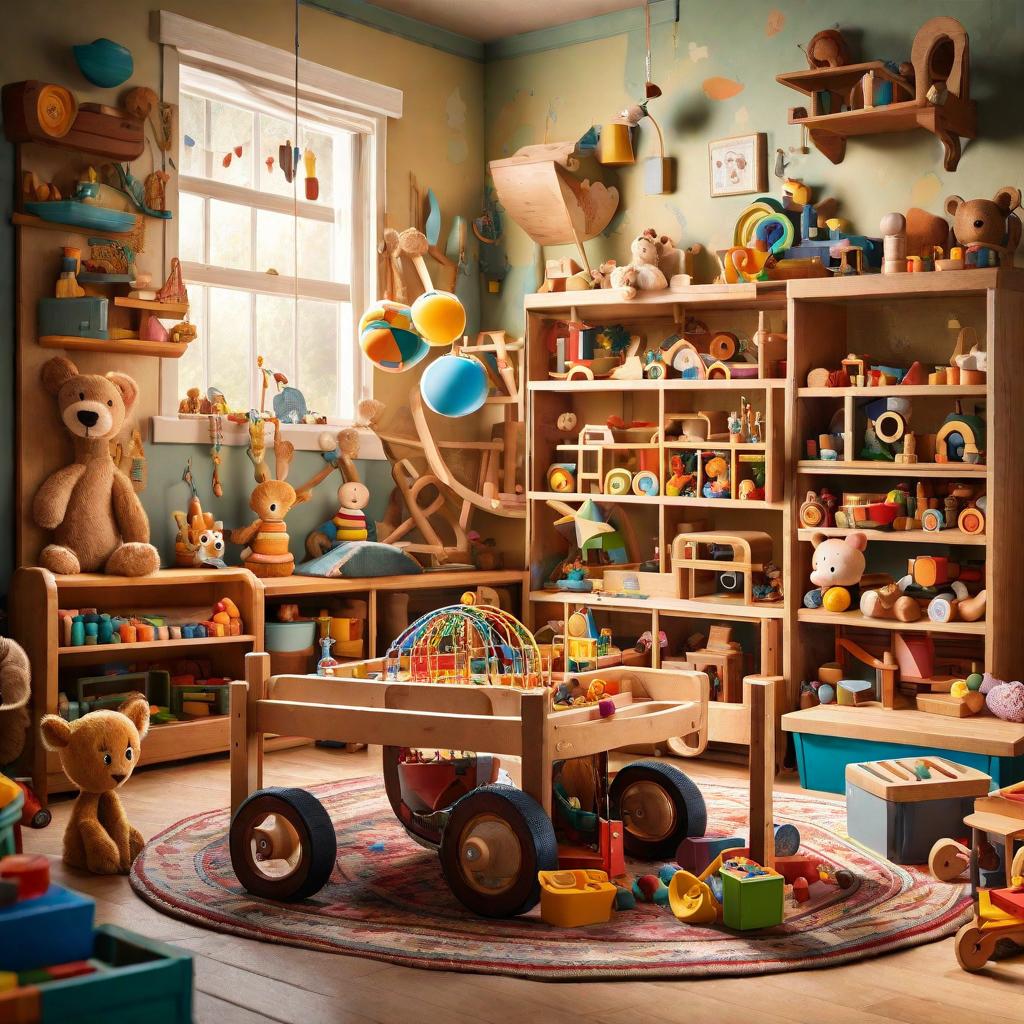

- Building Blocks Sets: Larger sets of building blocks with various shapes and colors can be used to create more intricate structures, promoting creativity, spatial awareness, and fine motor skills.
- Simple Jigsaw Puzzles: Introduce toddlers to simple jigsaw puzzles with larger pieces. These puzzles help enhance problem-solving skills and hand-eye coordination.
- Play Kitchen Sets: Mini-play kitchen sets, including pots, pans, and utensils, encourage toddlers to engage in imaginative play. This type of play supports social skills and language development.
- Dress-Up Clothes: Costumes and dress-up clothes allow children to use their imagination and engage in role-playing, which can promote creativity and social skills.
- Art and Craft Supplies: Encourage children to explore their artistic abilities using washable paints, child-safe scissors, and other craft supplies. These activities promote the improvement of fine motor skills, creativity, and self-expression.
- Outdoor Sports Equipment: Age-appropriate sports equipment, such as a softball, small soccer goal, or T-ball set, can encourage physical activity and coordination.
- Duplo or Mega Bloks Sets: Larger building blocks, such as Duplo or Mega Bloks, are great for developing fine motor skills, creativity, and problem-solving abilities through intricate constructions.
- Simple Board Games: Board games with simple rules and large pieces are great for teaching turn-taking, counting, and basic game mechanics.
- Interactive Learning Tablets: Educational tablets for young children can teach basic concepts like letters, numbers, and shapes through interactive games and activities.
- Play Dough and Tools: Playing with play dough and child-friendly tools can help toddlers explore their senses, textures, and shapes, while also promoting fine motor skills.
- Dollhouses with Figures: Dollhouses with accompanying figures and furniture encourage imaginative play and storytelling, fostering language development and social skills.
- Large Floor Puzzles: Oversized floor puzzles with vibrant images and large pieces can be engaging for toddlers while promoting problem-solving skills and cooperation when done with others.
- Outdoor Riding: Tricycles, balance bikes, or ride-on plaything with pedals improve gross motor skills and coordination. Outdoor activities are important for physical development.
- Simple Musical Instruments: Enhance your child’s musical improvement by introducing simple instruments like a keyboard, tambourine, or maracas, which can support their rhythm and auditory skills.
- Sorting and Matching Games: Games that involve sorting and matching colors, shapes, or objects help reinforce cognitive skills and pattern recognition.
Always ensure that playthings are age-appropriate, safe, and free from small parts that could pose a choking hazard. Supervise playtime, encourage interactive play with caregivers or peers, and consider the child’s interests when selecting plaything.
5 to 8 Years
Children aged between five and eight years are at a stage of rapid development, acquiring new skills and abilities such as improved coordination, advanced problem-solving skills, and a growing sense of creativity and imagination. Here are some playthings that we recommend for children in this age group:
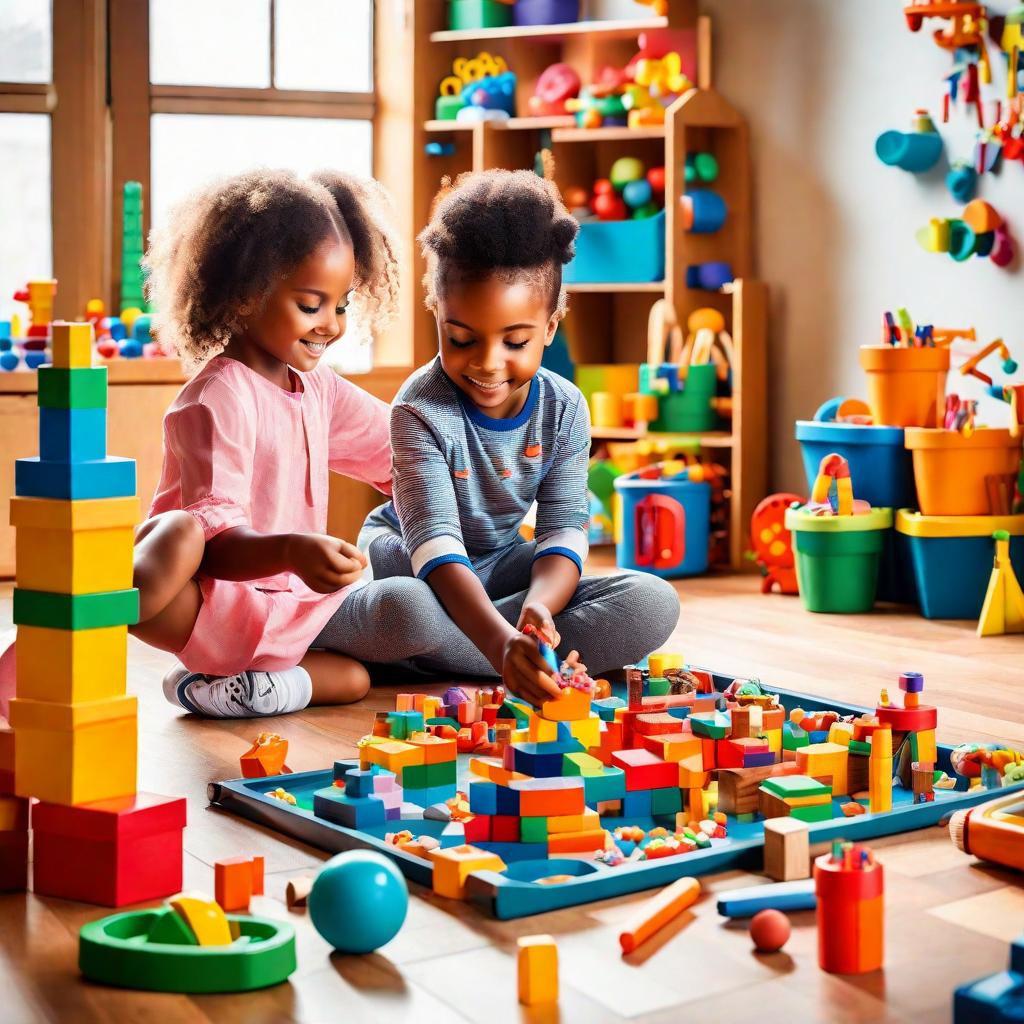

- Building Sets and Construction: Construction toys with various pieces and themes, such as LEGO sets, promote creativity, problem-solving skills, and fine motor development.
- Board Games: Board games with simple rules and engaging themes help develop strategic thinking, social skills, and patience. Look for games that match their interests and are age-appropriate.
- Art Supplies: Encourage creativity and self-expression with art supplies like colored pencils, markers, paints, and sketchbooks.
- Puzzles: More intricate puzzle designs, with higher piece counts, challenge children’s problem-solving skills and patience. It’s important to choose puzzles with themes that interest them.
- Educational Kits: Hands-on project kits that include instructions and materials for science, math, and crafts can be an enjoyable and educational way to learn through play.
- Sports Equipment: Using age-appropriate sports equipment like soccer balls, basketballs, or tennis rackets can encourage physical activity, coordination, and teamwork.
- Remote-Controlled Toys: Remote-controlled vehicles like cars, helicopters, and drones provide an exciting way for children to develop hand-eye coordination and engage in imaginative play.
- Reading Books: Books tailored to children’s reading levels and interests, such as chapter books, picture books, and interactive books, are important for developing literacy skills and fostering a love of reading.
- Craft Kits: Craft kits that allow children to create their jewelry, decorations, or other crafts provide an outlet for creativity and fine motor skill development.
- Musical Instruments: Introducing children to basic musical instruments like keyboards, ukuleles, or beginner guitars can help them develop their auditory skills while experiencing the joy of creating music.
- Educational Board Games: Board games that combine entertainment with learning, covering topics like math, language, or geography, are great for expanding their knowledge in a fun way.
- Role-Playing Sets: Costumes and role-playing sets that allow children to pretend to be different characters, such as doctors, firefighters, or chefs, promote imaginative play and social skills.
- Building and Design Apps: Apps that focus on building and design can complement kids’ screen time with educational content, encouraging problem-solving and creativity appropriate for their age.
Always prioritize safety when selecting playthings for children, and consider their individual interests and developmental levels. Encourage a balance between screen time and other types of play, and participate in activities with them to enhance the experience.
Factors to Consider When Choosing Development Toys:
Selecting appropriate improving playthings for children requires careful consideration of their age, improving stage, and individual interests. Here are some factors to consider when choosing developmental playthings:
- Age Appropriateness: Select plaything based on the child’s age and improving level. Age recommendations on packaging can guide parents and caregivers.
- Safety: Prioritize toy safety by selecting those that meet established standards. Check for choking hazards and non-toxic materials. Look for age-appropriate warnings and guidelines.
- Educational Value: When choosing toys for children, opt for ones that have educational benefits and align with their developmental needs. Look for playthings that promote cognitive skills, language development, motor skills, and social interaction.
- Versatility: Choose an adaptable plaything that can be used for various developmental stages.
- Durability: It is important to select toys that are well-made and durable to withstand regular play, especially for younger children who may explore plaything through mouthing or more vigorous play.
- Interactivity: Interactive toys that respond to a child’s actions or encourage engagement with others can enhance the play experience and promote social development.
- Improving l Focus: When choosing a toy, consider the child’s developmental needs, such as fine or gross motor skills, sensory improvement, and cognitive abilities, and select a toy that matches those needs.
- Creativity and Imagination: Toys that inspire creativity and imagination promote cognitive and emotional development. Choose a plaything that encourages open-ended play and cultivates a child’s imagination.
- Interest and Engagement: When choosing a plaything for a child, it’s important to consider their interests and preferences. Opting for playthings that align with their favorite activities or themes can enhance their engagement and make playtime more enjoyable.
- Social Interaction: To support the improvement of social skills, playthings that promote social interaction, cooperation, and teamwork can be used, such as board games, role-playing sets, and group activities.
- Size and Portability: When choosing a toy, consider the available play space and the toy’s size. Portable playthings are convenient for travel and on-the-go play.
- Parental Involvement: When selecting a toy, determine if parental supervision is necessary and if it encourages cooperative play.
- Reviews and Recommendations: When selecting a toy for your child, read reviews from other parents or caregivers to gain insights into its durability, educational value, and appropriateness. Recommendations from trusted sources can also guide your choices.
When selecting toys for your baby, it is important to keep your budget in mind. You don’t need to spend a lot of money to find playthings that provide educational and developmental benefits. By taking the time to carefully consider these factors, you can choose playthings that not only entertain but also contribute positively to your baby’s growth and learning experiences.


